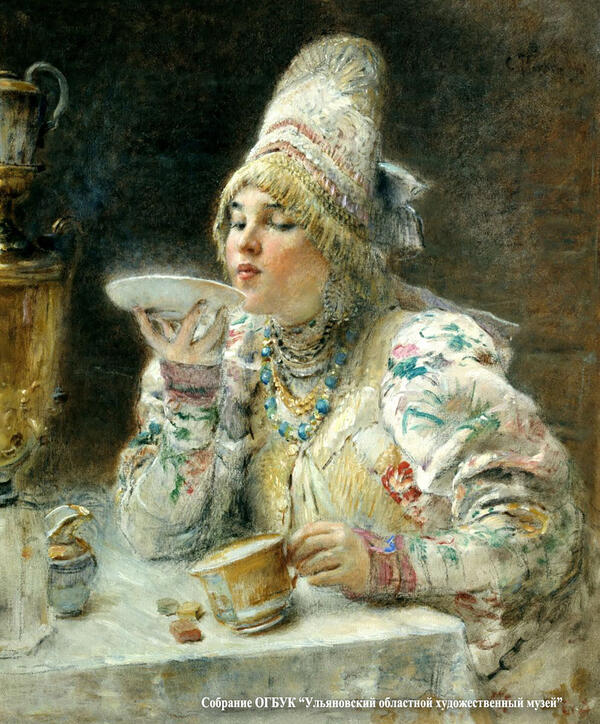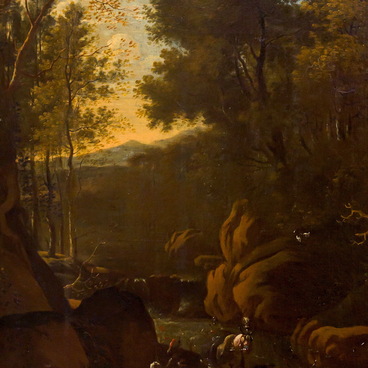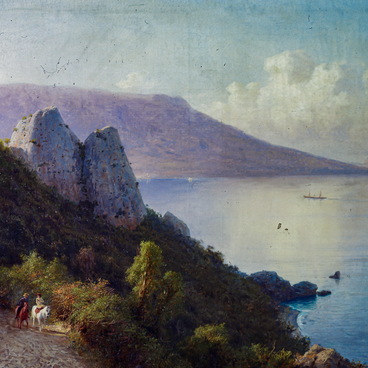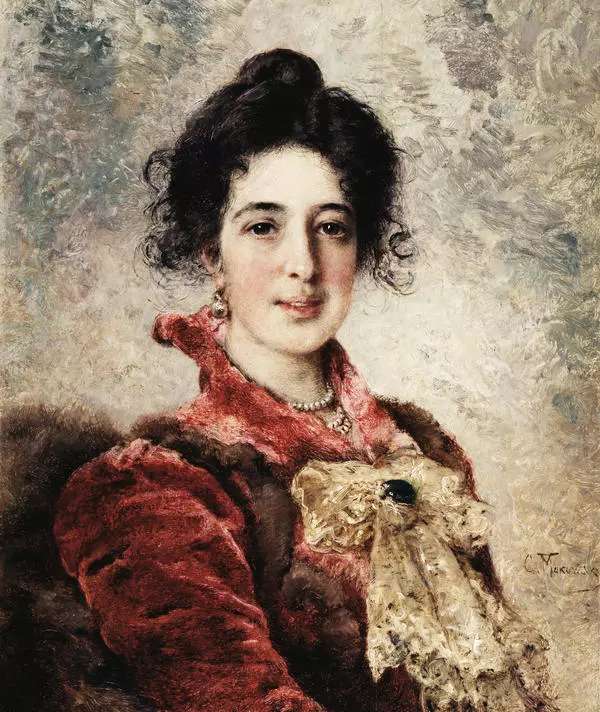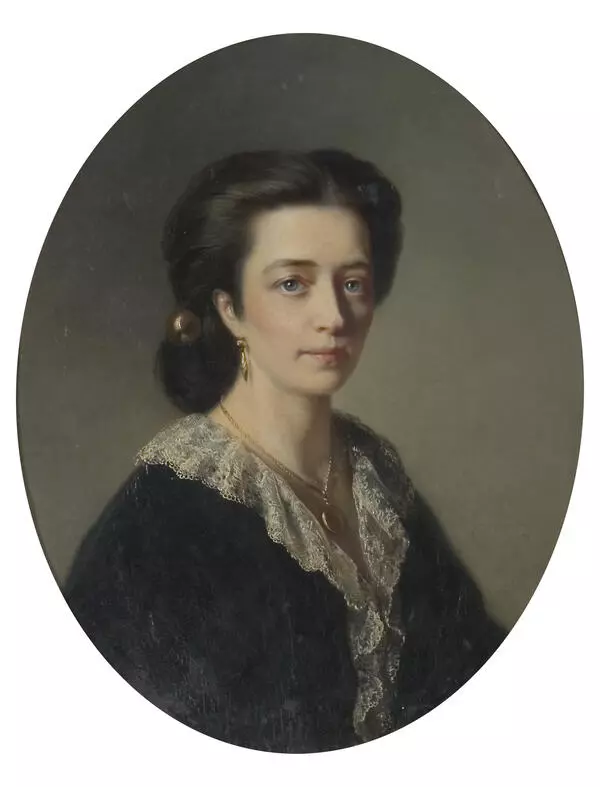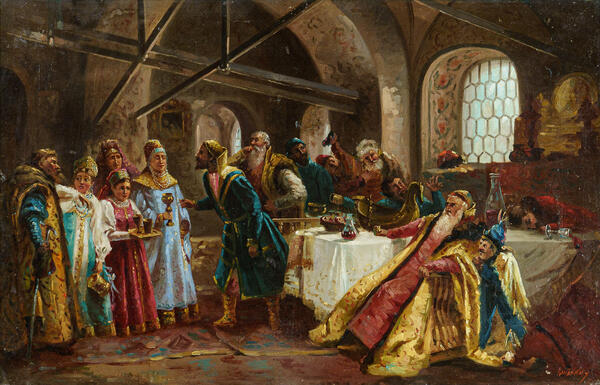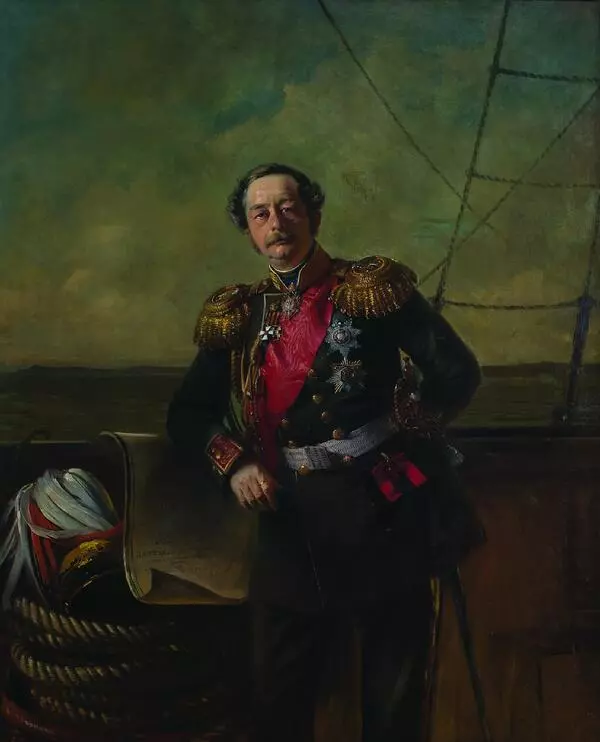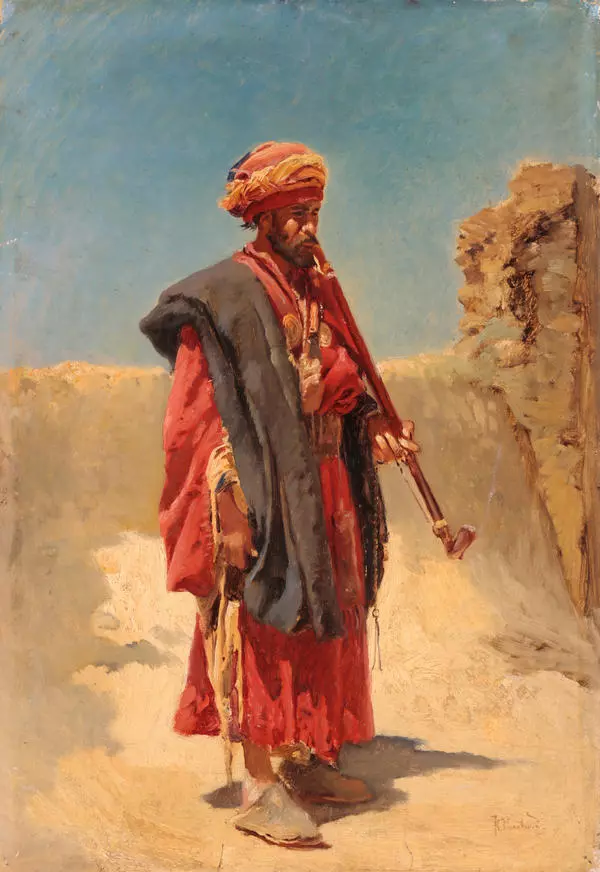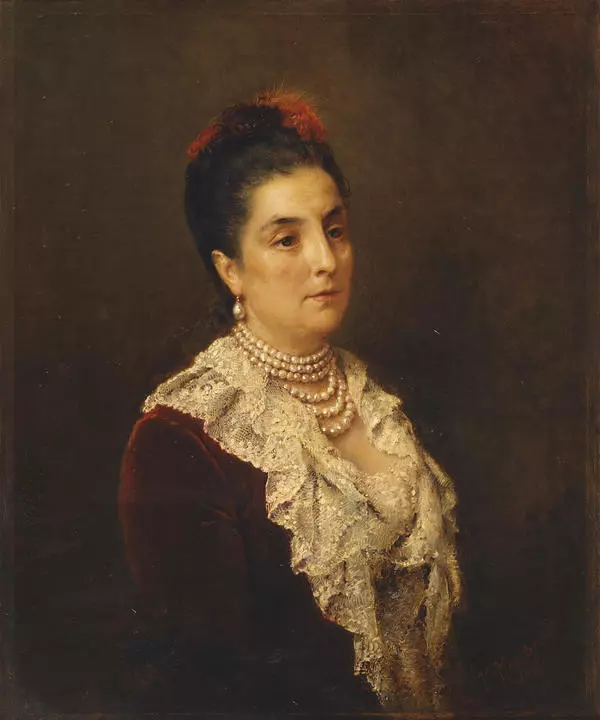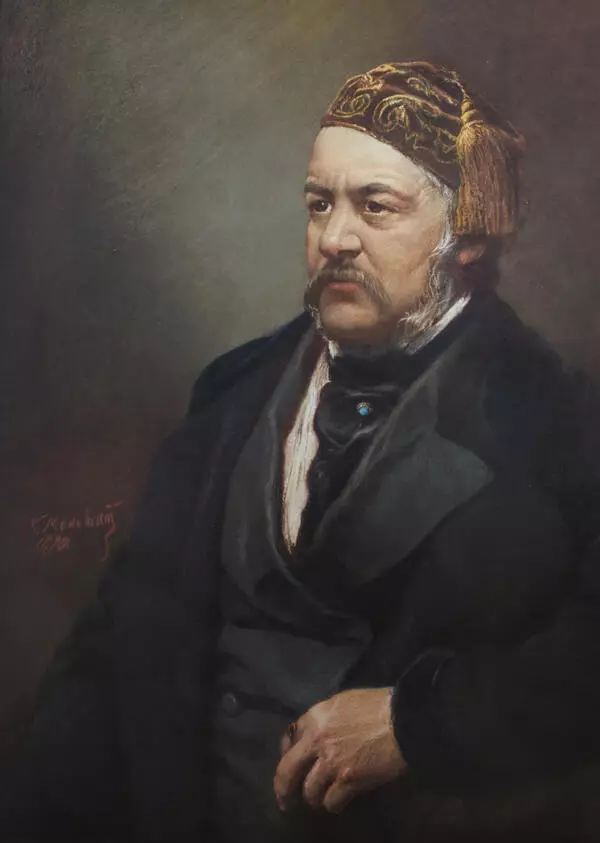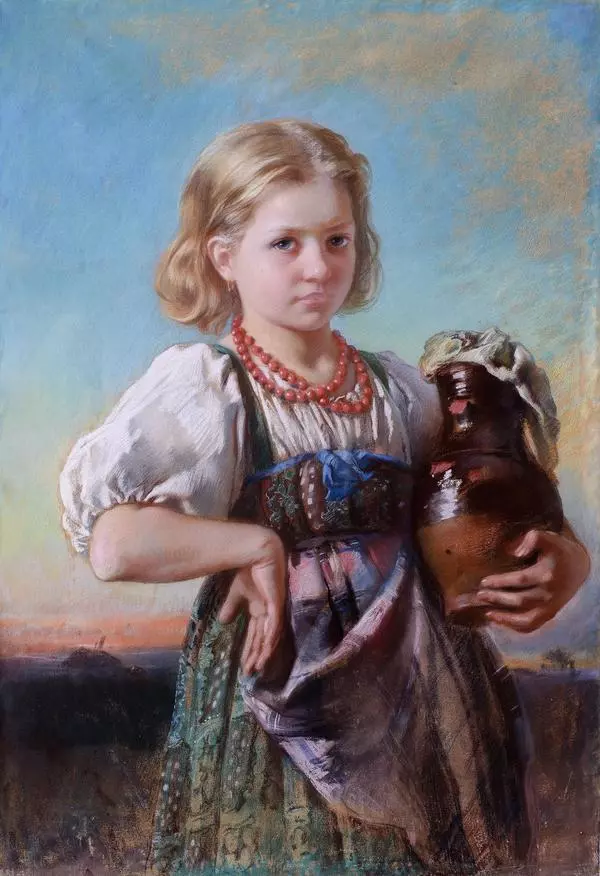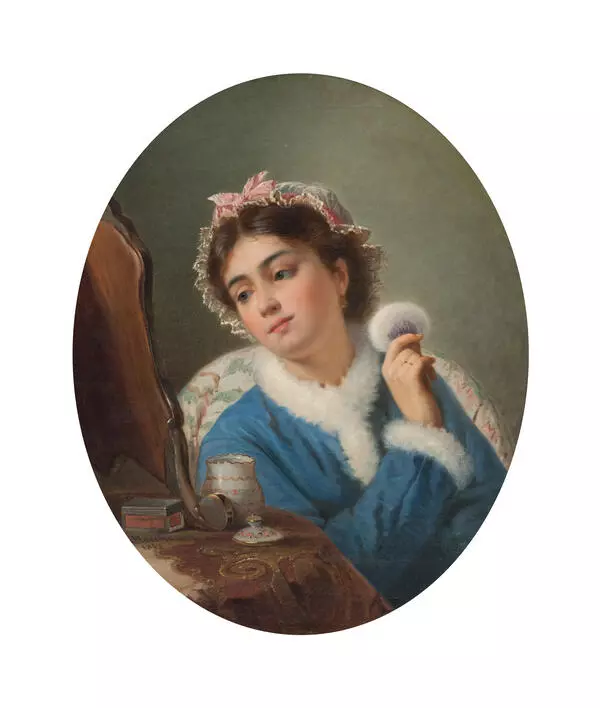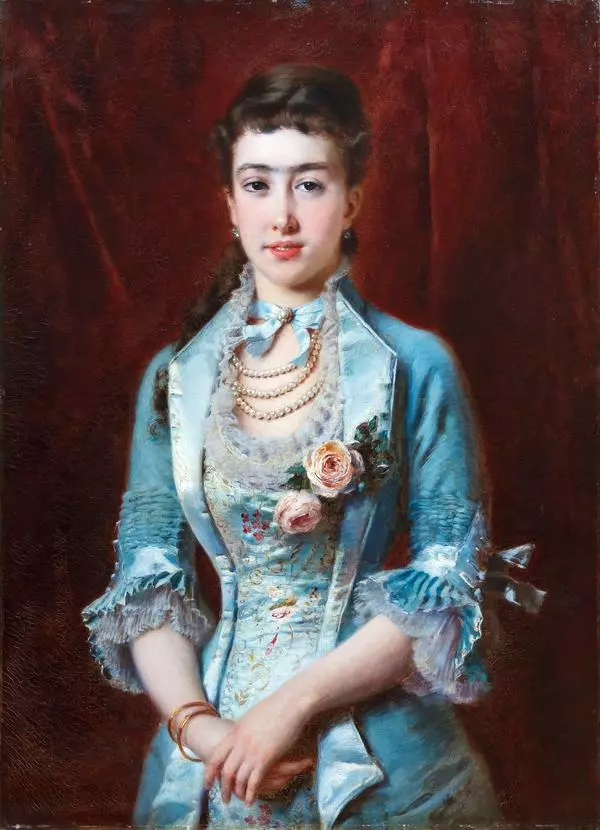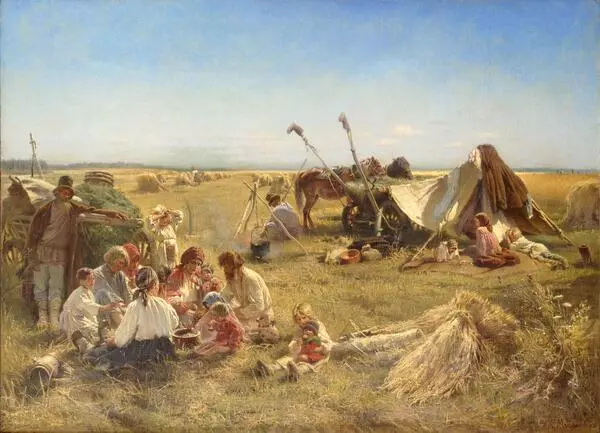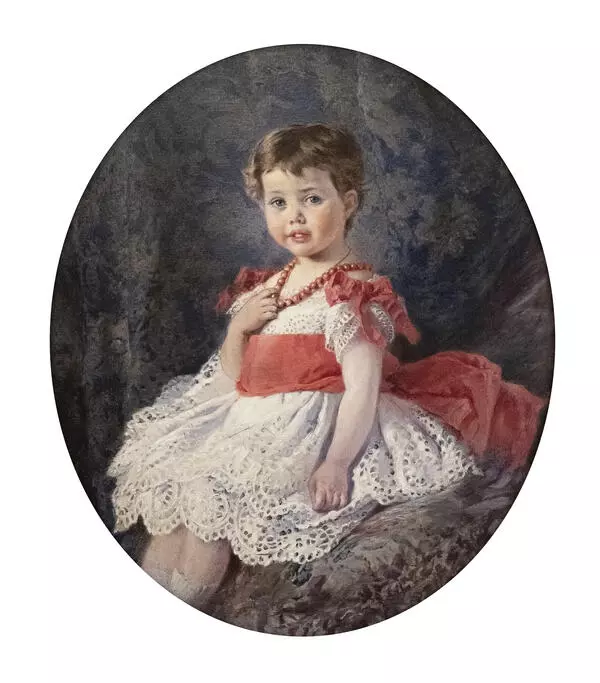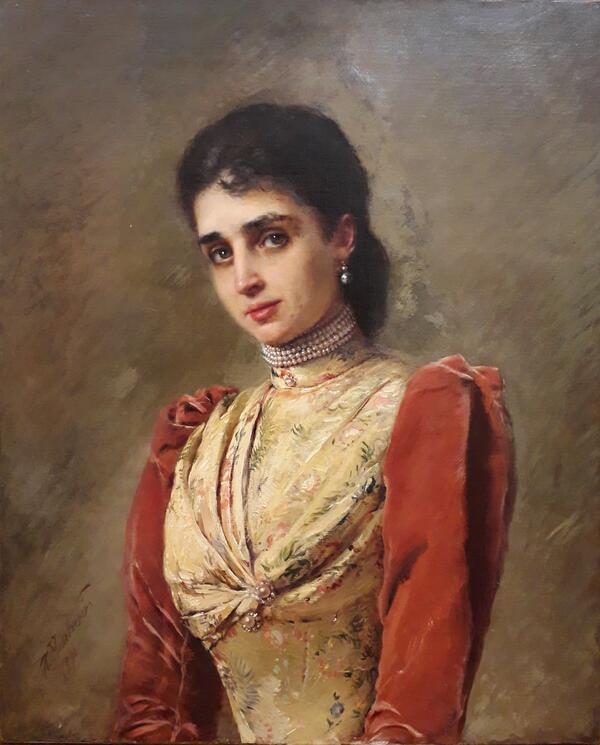The painting “Boyaryshnya Drinking Tea” by Konstantin Makovsky is one of the most popular ones among the visitors of the Ulyanovsk Regional Art Museum. The decorative portrait is full of light; each detail is a source of admiration and an example of aesthetic value. The drawing captures the movement and the luminescent color pallet is based on the combination of pink, purple and greenish hues mixed with white. The bright painting creates a feeling of joy. Makovsky portrayed his contemporary, a pretty coquette full of health and vitality, whose charm and youth had inspired the artist.
The Makovskys were a metropolitan dynasty of Polish origin, which had produced wonderful painters, artists, and poets. Konstantin Yegorovich Makovsky was born in Moscow into the family of a singer and an amateur artist. Konstantin’s father became his first educator (he also taught Konstantin’s siblings — Alexandra, Nikolai and Vladimir). Yegor Makovsky was a great connoisseur of art: he collected paintings and founded the “nature class” on Bolshaya Nikitskaya Street (in 1865, this class became the Moscow School of Painting, Sculpture and Architecture). “For what I have become, I consider myself indebted not to the Academy, not to the professors, but exclusively to my father, ” Konstantin Makovsky reminisced later.
In 1858, Konstantin Makovsky managed to enter the Imperial Academy of Arts. He participated in exhibitions with his paintings “The Healing of the Blind” and “Agents of the False Dmitry Kill the Son of Boris Godunov”. The painter was among the best students. At the age of 24, Makovsky took part in the “Revolt of the Fourteen”, when the students refused to illustrate a story from Scandinavian mythology that had been chosen for them as the theme of their graduation project. The students were indignant that they were unable to choose a subject on their own because of the new rules at the Academy. They ignored the Large Gold Medal competition and were expelled.
The rebels founded the Artel of Artists, which was the first trade union in Russia. Konstantin Makovsky followed the career of a free artist and joined the Association of Traveling Art Exhibitions. Soon he got famous for his portraits and history paintings, and became one of the highest paid Russian artists of the late 19th century. Makovsky remained true to his creative credo and painted beautiful, joyful and bright images.
The Makovskys were a metropolitan dynasty of Polish origin, which had produced wonderful painters, artists, and poets. Konstantin Yegorovich Makovsky was born in Moscow into the family of a singer and an amateur artist. Konstantin’s father became his first educator (he also taught Konstantin’s siblings — Alexandra, Nikolai and Vladimir). Yegor Makovsky was a great connoisseur of art: he collected paintings and founded the “nature class” on Bolshaya Nikitskaya Street (in 1865, this class became the Moscow School of Painting, Sculpture and Architecture). “For what I have become, I consider myself indebted not to the Academy, not to the professors, but exclusively to my father, ” Konstantin Makovsky reminisced later.
In 1858, Konstantin Makovsky managed to enter the Imperial Academy of Arts. He participated in exhibitions with his paintings “The Healing of the Blind” and “Agents of the False Dmitry Kill the Son of Boris Godunov”. The painter was among the best students. At the age of 24, Makovsky took part in the “Revolt of the Fourteen”, when the students refused to illustrate a story from Scandinavian mythology that had been chosen for them as the theme of their graduation project. The students were indignant that they were unable to choose a subject on their own because of the new rules at the Academy. They ignored the Large Gold Medal competition and were expelled.
The rebels founded the Artel of Artists, which was the first trade union in Russia. Konstantin Makovsky followed the career of a free artist and joined the Association of Traveling Art Exhibitions. Soon he got famous for his portraits and history paintings, and became one of the highest paid Russian artists of the late 19th century. Makovsky remained true to his creative credo and painted beautiful, joyful and bright images.

